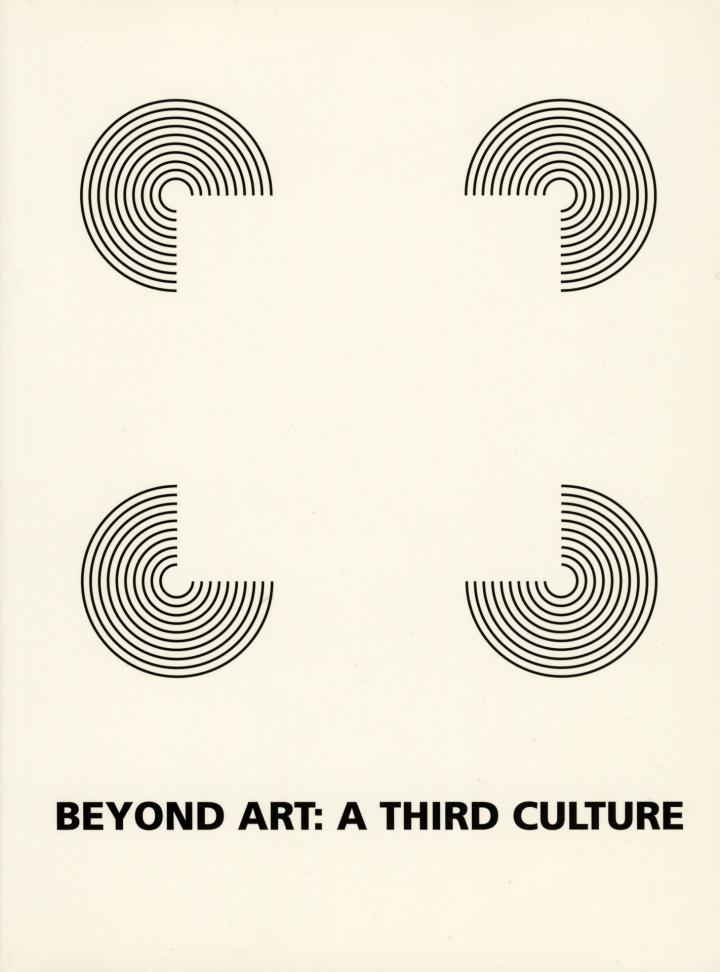Peter Weibel (ed.): Beyond Art: A Third Culture. A Comparative Study in Cultures, Art and Science in 20th Century Austria and Hungary (2005)
Filed under book | Tags: · art, art and science, art history, austria, computer art, conceptual art, cybernetics, history of science, hungary, mathematics, media art, philosophy, psychoanalysis, technology

“Austria and Hungary in the 20th century were nations that made enormous achievements in the formal sciences and arts: abstraction, logic, mathematics, physics, positivism, psychoanalysis, cybernetics, constructivism, economics, art, media art, and concept art. Art and science are usually divided into two different cultures, and nations, too, are seen as having separate ones. This book delivers a new model of consilience and convergence of art and science by closely studying in a material historical way by using a multitude of original papers and contributions, photographs, documents, bibliographies, biographies, and survey essays, the mutual influence of art and science in Austria and Hungary. In fields ranging from Gestalt psychology to Quantum physics, from constructivism to theories of vision, from holography to cyberspace, we discover a multitude of ideas, books, movements and personalities that have deeply influenced the world. Richly illustrated, the book is a nearly invaluable sourcebook, in which a new method, resembling more a CD-ROM narration than a dictionary, has been used to map an unknown horizon of knowledge. Those involved in the history of science or art and in the field of cultural theory, will find an incomparable frame of reference and information. They will discover not only genius, talents and themes they have not been aware of, but also a new model of culture, a third culture. The book is graphically and structurally user-friendly with a synopsis for each chapter, models, diagrams, images, corolaries and index etc.”
Publisher Springer, Vienna, 2005
ISBN 3211245626, 9783211245620
616 pages
PDF (40 MB, updated on 2019-10-30)
Comments (2)George Stiny, James Gips: Algorithmic Aesthetics: Computer Models for Criticism and Design in the Arts (1978)
Filed under book | Tags: · aesthetics, computer art, design, graphics, music, software

“Can a computer appreciate a work of art? Can a computer create a new work of art? What does it mean for an object to be a work of art? How are objects understood as works of art? Dozens of ways of understanding art have been proposed. Is there one true way to understand works of art? If not, what do the different ways of understanding art have in common? How might they be implemented in a computer? Does this “computer” or “algorithmic” approach have any contributions to make to the field of art and aesthetics?
The book was written between 1974 and 1976 in Los Angeles. We had no access to a computer so we employed a typist to translate our hand written pages into typed manuscript.”
Publisher University of California Press, 1978
ISBN 0520034678
220 pages
Ars Electronica Festival Documentation & Catalog Archive, 1979-2007
Filed under catalogue | Tags: · art, computer art, electronic art, installation art, media art

The Festival documentation presents selected art projects and relevant texts from 27 years of Ars Electronica. Some of the texts showcased here have been abridged; you’ll find the full text in the Catalog Archive, which contains unabridged versions of all texts that have been published in the Ars Electronica catalogs since 1979.
View online (HTML/PDF)
Comment (0)
